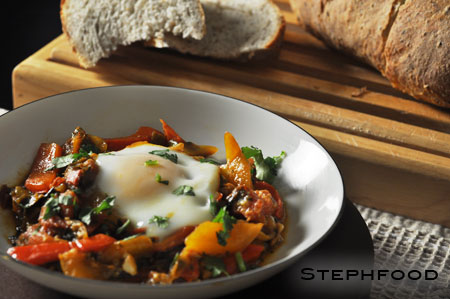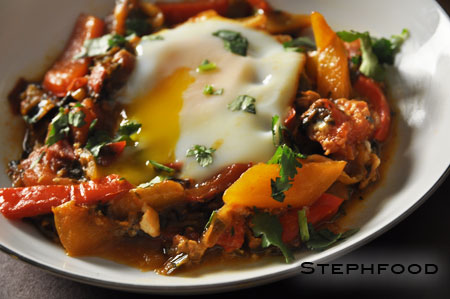Shakshuka is a North African dish that is mostly eggs cooked in tomato sauce – with other things added to it to make it interesting – eaten with bread. In this case, we added colourful bell peppers, onions, and herbs. Incredibly simple – but so very good.
This recipe is a sort of “cookbook author audition” for me. There’s this cookbook I want, and the recipes look good and the photos are enticing, and the reviews have been great – but I’m still wary. Haven’t we all tried a recipe that was nearly unfollowable (if that’s a word)? I don’t have enough shelf space for books like that, so I’m holding auditions.
I’ve been lucky enough to find some recipes posted online by said cookbook author, Yotam Ottolenghi, and I’m trying a few out to see if we’ll get along. Oh yes, I think we’ll get along just fine.
This particular recipe isn’t from Jerusalem – the book I plan to buy. It was offered online by The Guardian (and possibly in his other book, Plenty, but I’m not sure if it’s the exact same recipe). I chose it because I’ve made Shakshuka before, and wanted to compare. To make things interesting, there’s also a video of him actually making the dish – yay!
This one was fantastic. It made me want to go out and buy personal-sized cast iron pans so I can make this every day and not make a mess. Although, to be fair, there is no mess to be had now. We ate every bite, and sopped up every bit of sauce with delicious bread.
Of course this was incredibly satisfying on a cold winter night, but I can’t wait for the fresh and perfectly ripe tomatoes of summer. Heaven!
Get the recipe here:
Yotam Ottolenghi’s shakshuka recipe









